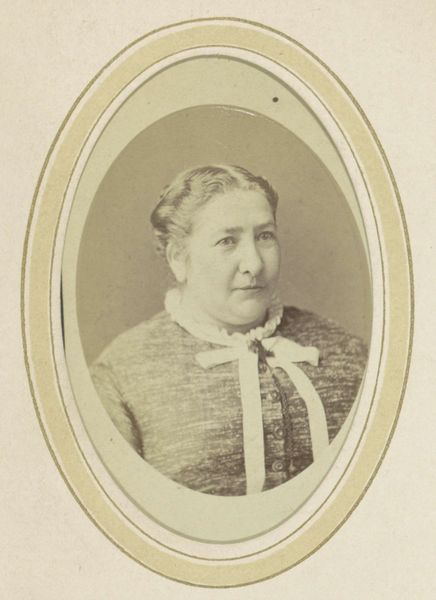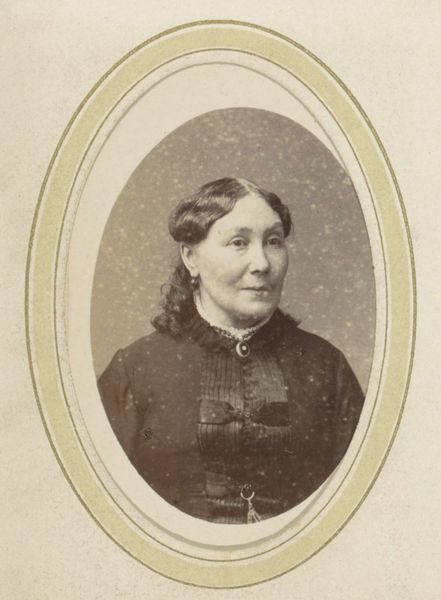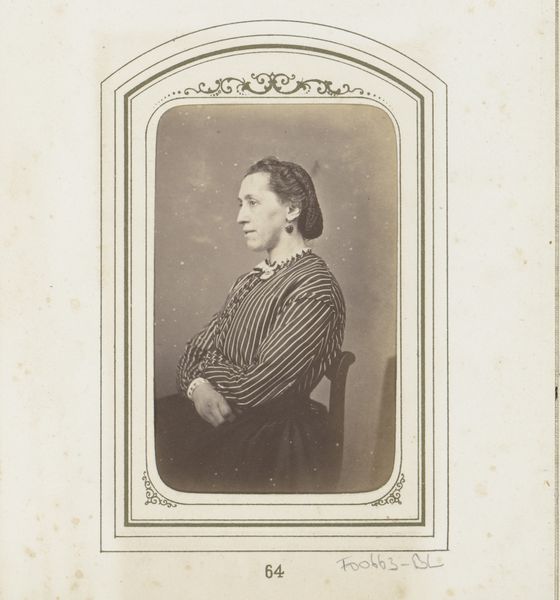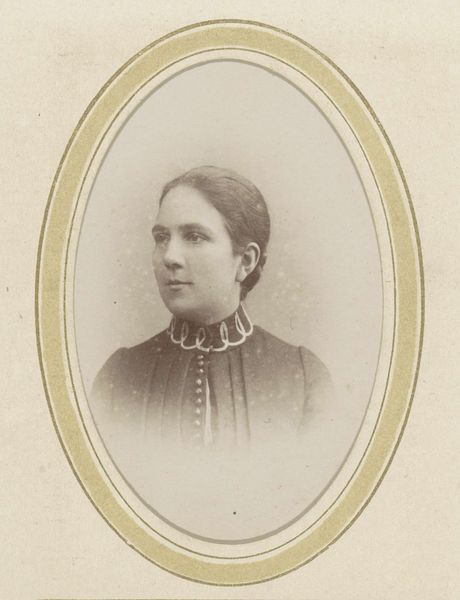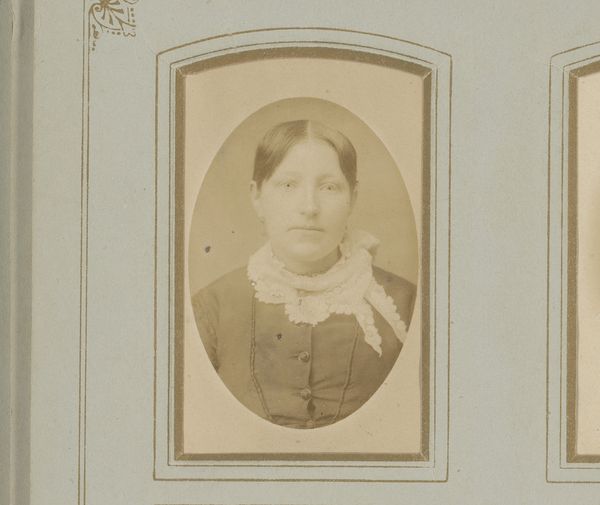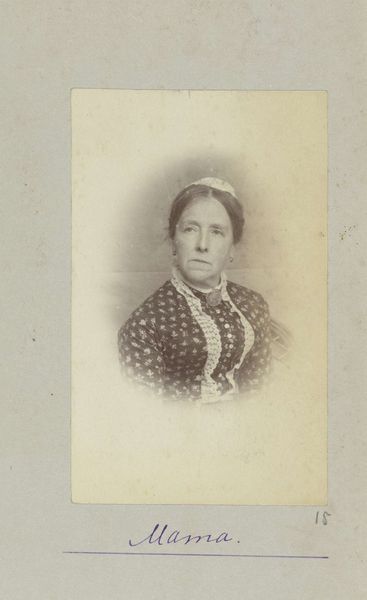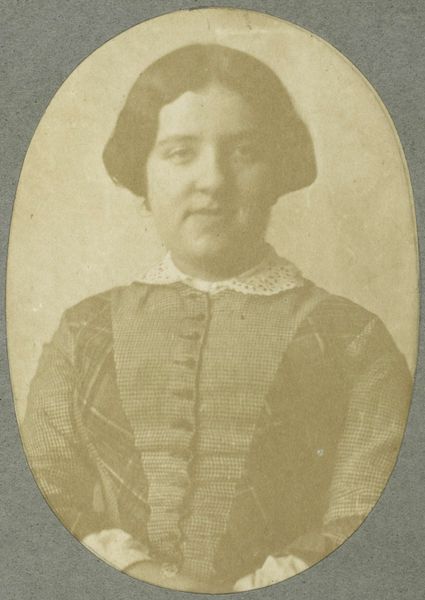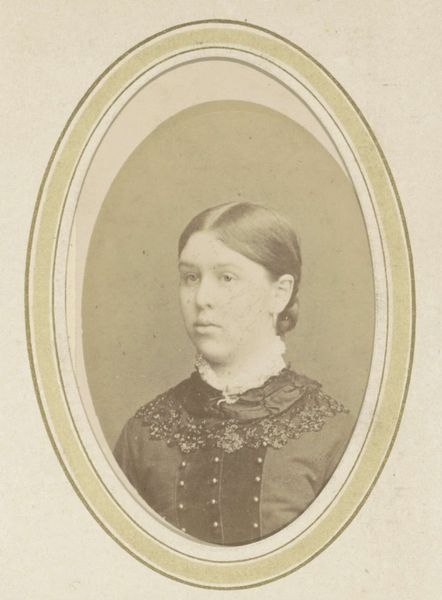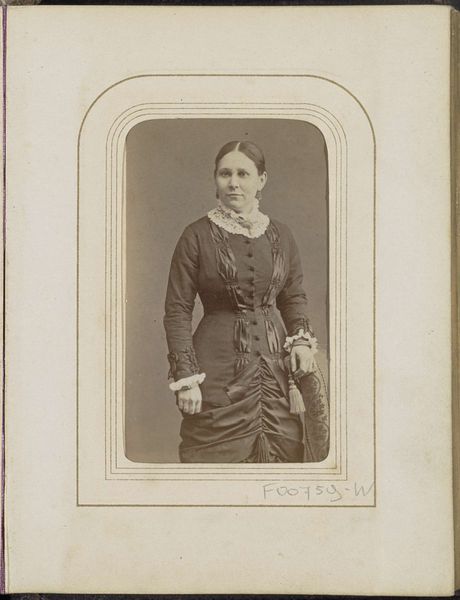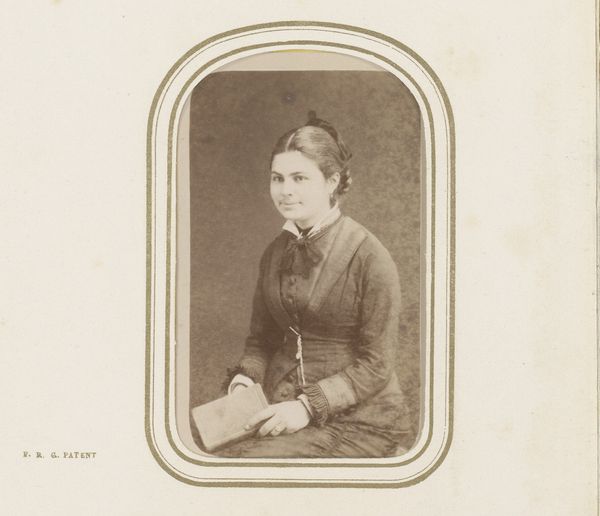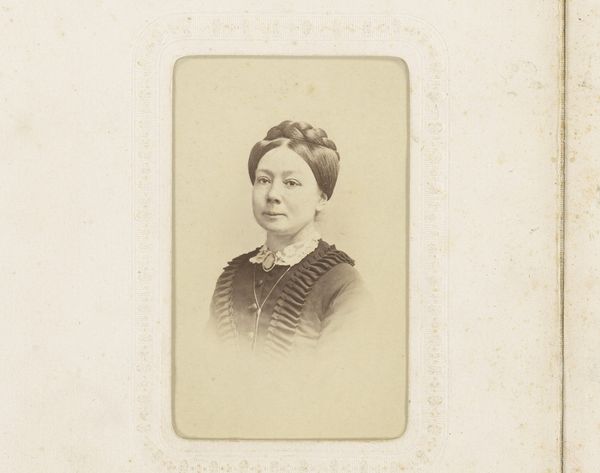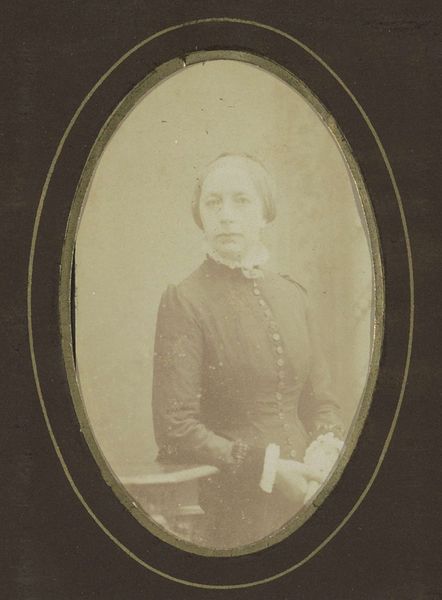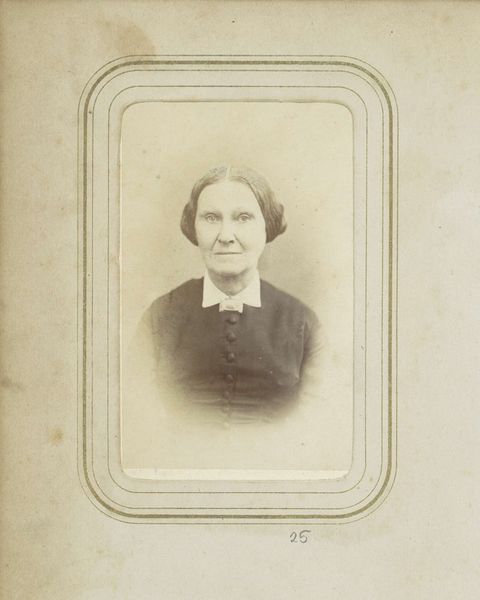
Portret van een vrouw met opgestoken haar en een witte kraag c. 1869 - 1874
0:00
0:00
photography, albumen-print
#
portrait
#
figuration
#
photography
#
albumen-print
#
realism
Dimensions: height 93 mm, width 59 mm, height 101 mm, width 63 mm
Copyright: Rijks Museum: Open Domain
Editor: This albumen print, "Portrait of a Woman with Her Hair Up and a White Collar" by Johan Hendrik Hoffmeister, dating from around 1869 to 1874, strikes me as quite formal. The oval frame further emphasizes a sense of historical distance and maybe even a certain somberness. What does this image evoke for you? Curator: I'm struck by how these portrait photographs, which were becoming increasingly accessible at this time, functioned as documents of social identity. The woman's attire and hairstyle—the restrained elegance of her collar and updo—speak to a particular social standing, a bourgeois respectability that photography helped to solidify and disseminate. Do you think the very act of commissioning such a photograph also says something about the subject's position within society? Editor: That's an interesting point. Perhaps it signals a desire for upward mobility or simply the ability to participate in a growing cultural trend? Were these photos always meant for public display? Curator: Not always 'public' in the sense of a gallery, but certainly intended for circulation within a specific social sphere – family, friends, colleagues. Think of them as early forms of social media profiles. Photography was also employed as a method of categorization and control; from mugshots to ethnographic studies. Editor: So even seemingly benign portraits could play a part in broader power structures? That gives me a lot to consider. Curator: Precisely. Photography, even in its seemingly simplest form, isn't a neutral recorder of reality, but is always enmeshed in social and political forces. The way we perceive and interpret such images changes over time depending on cultural contexts. Editor: I hadn't considered the ways photographs like this participated in those historical forces. It makes the portrait so much more than just a likeness. Thanks for pointing that out. Curator: Absolutely. It's crucial to consider art's function and how museums can use that when we view and share artworks with others.
Comments
No comments
Be the first to comment and join the conversation on the ultimate creative platform.
